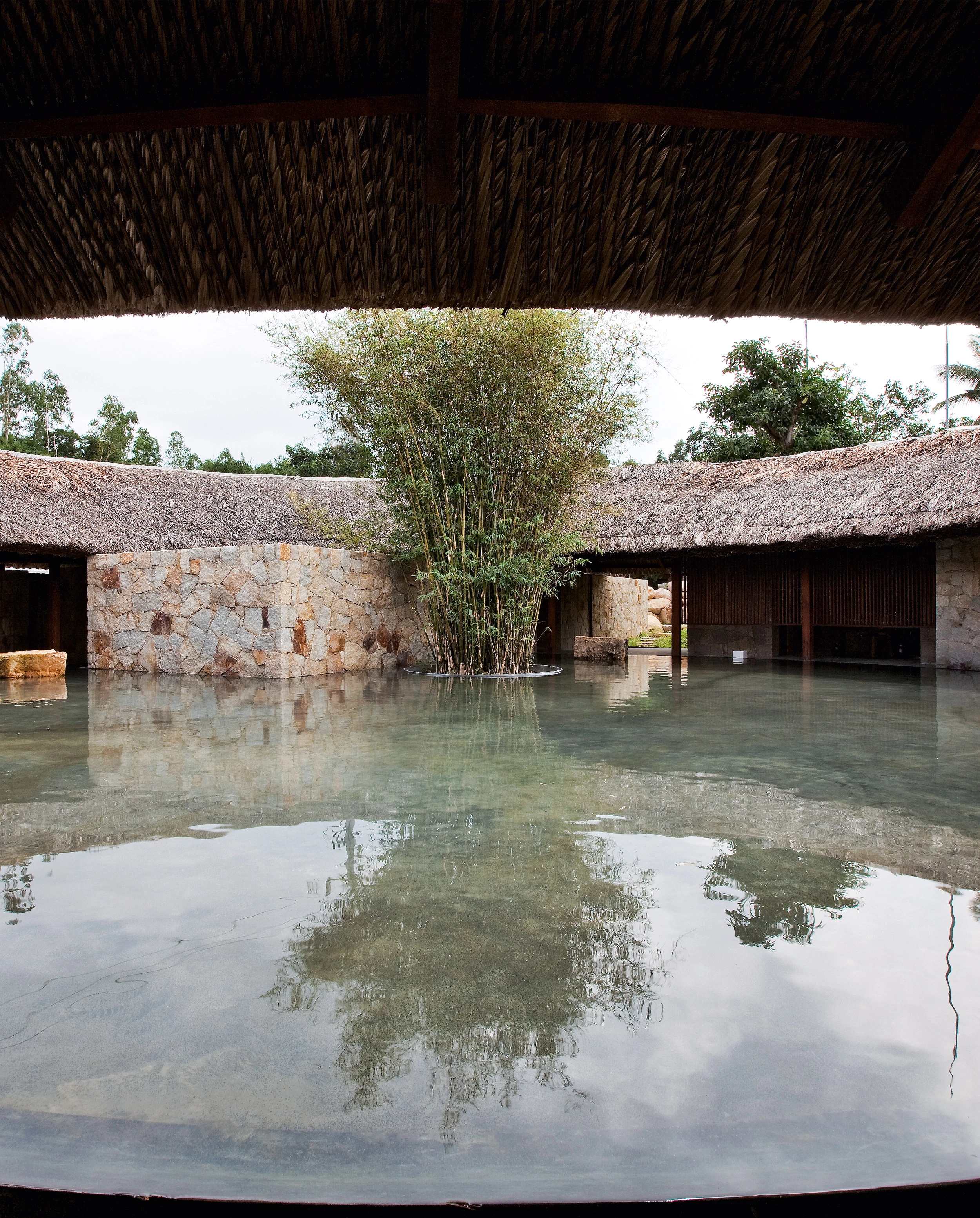Specializing in mud baths, this resort is located on a small hill with thermal springs aplenty, close to the main river of tropical Nha Trang, a Vietnamese city of almost 400,000 inhabitants.
Inspired in certain typological givens as well as in the construction methods of the country’s traditional architecture, the building is a circular and half-open pavilion erected with materials such as stone, wood, and coconut leaves. The purpose of this marked return to tradition is not just to add to the resort’s more or less picturesque charm, nor simply to take advantage of local products. The decision to go back to tradition was much influenced by sociological realities prevailing in the area. The local population only engages in farming during the harvest season, which lasts some two or three months; the rest of the year is spent on craft occupations related to stone carving and carpentry. Such artisan work is therefore given special prominence in this project, where the wooden beam structure is based on a system of traditional mortise and tenon joints.
As for organizational layout, the center of the pavilion is a depressed courtyard, another very characteristic arrangement in the traditional architecture of this region of Vietnam, one which in this case does much to combat the climate of the tropics.
Obra Work
i-resort, Nha Trang (Vietnam).
Arquitectos Architects
a21studio / Niep Hoa Ngyen, Nhon Qui, Nguyen, Hang Thi Tran, Tien Giao Ngo, Toan Dinh Nghiem.
Fotos Photos
Hiroyuki Oki.









